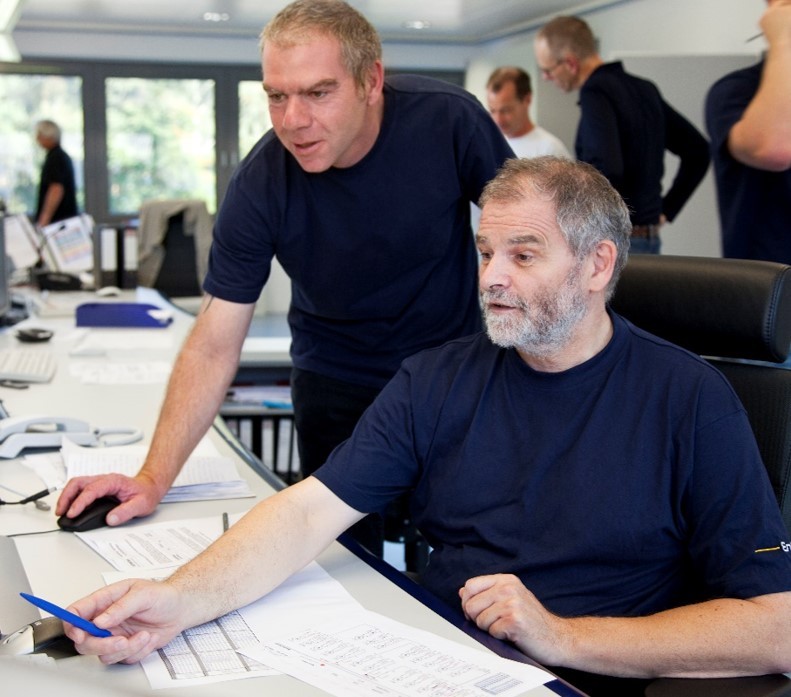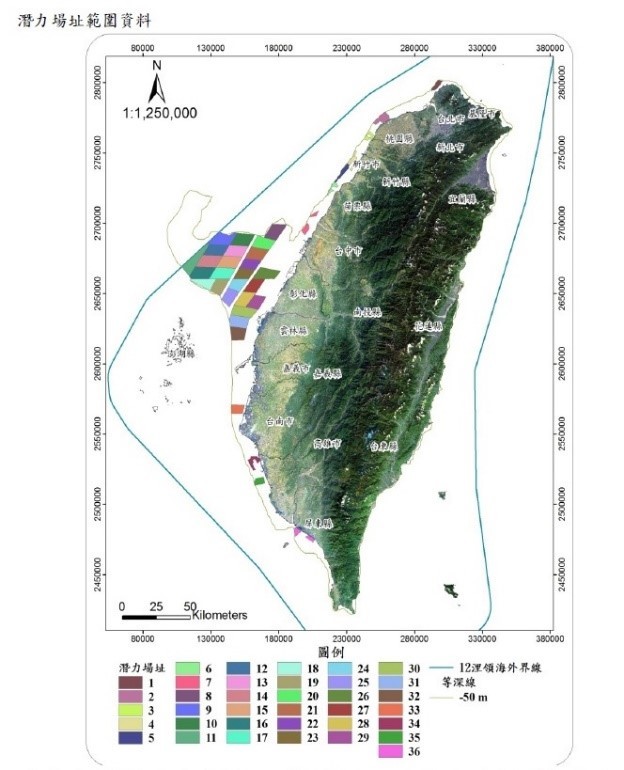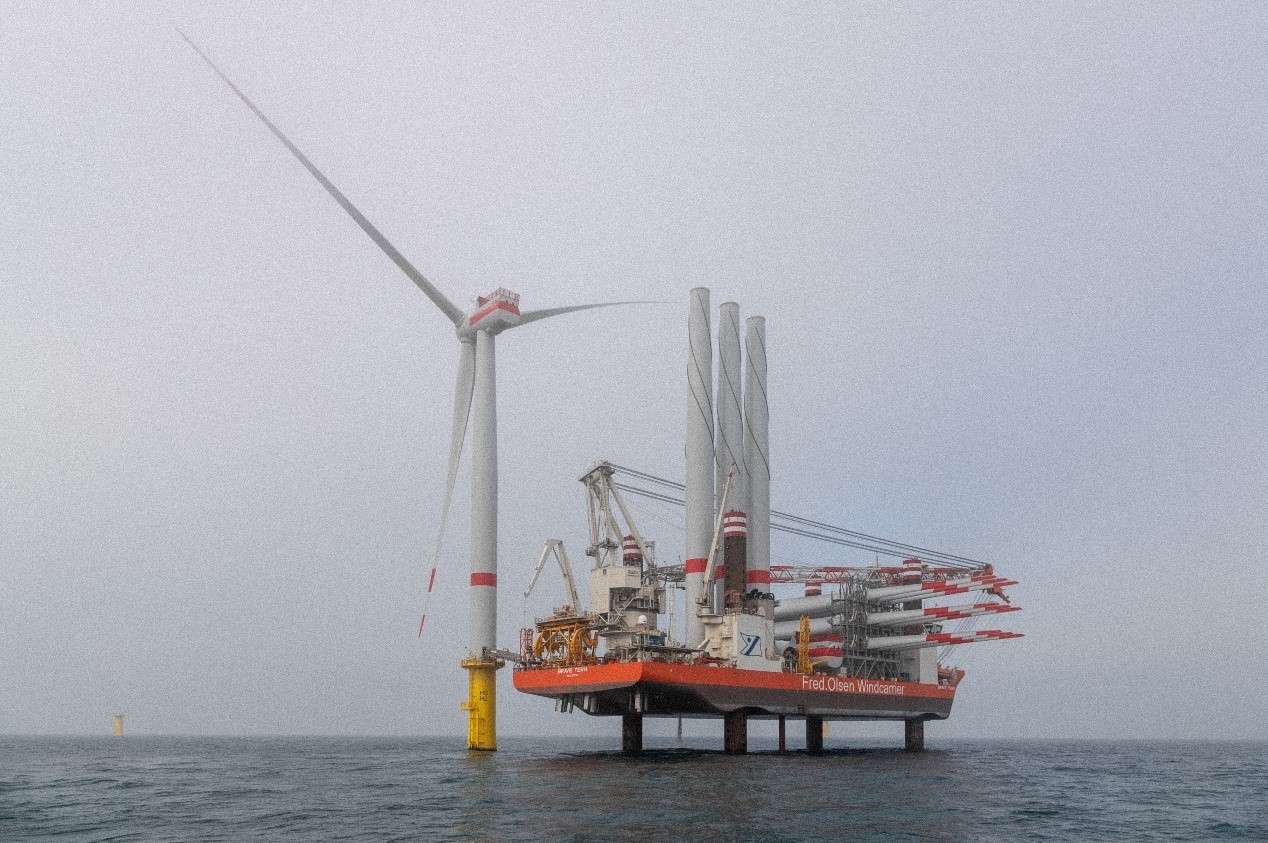The Energy sector is not only an important part of a nation’s infrastructure, but also key to strengthen long-term industry investments. Offshore wind power is essential to the overall energy picture, because it offers several advantages – it does not compete for limited land space, and it accesses the more abundant wind resources that prevail at sea. This is why Offshore Wind is such an important source of energy today and is one of the fastest growing energy solutions globally.
The lifespan of an offshore wind farm (OWF) can be as long as 25 to 30 years and typically goes through four cycles: “Development & Planning” during which the OWF is planned and preparations are made, “Construction” during which the equipment is installed, “Operation & Maintenance” where energy is generated, and “Decommissioning” during which the OWF is built back or undergoes repowering, which means that the older Wind Turbine Generators are replaced with newer ones.

The life cycle of an offshore wind farm includes: development & planning, construction, operation & maintenance, and decommissioning. (Source: EnBW)
Development & Planning – preparation before offshore wind farm construction
OWFs are large-scale infrastructure investments. For developers every offshore wind farm represents an enormous investment. Performing diligent investigations is paramount. This not only helps the developer to identify optimal sites and to make the best possible construction plans, but also enables better anticipation of possible challenges during the construction stage. Furthermore, a detailed investigation report supported by third-party certification provides greater assurance to lenders and investors.
Development & planning typically takes one to five years, and the investigation generally evaluates two crucial aspects: “offshore wind farm potential” and “development impact.” The former involves such research as wind power potential studies and offshore construction surveys, whereas the latter focuses on reducing possible impacts from construction on the ecosystem.

Planning and investigation are critical prior to the construction of an offshore wind farm and must be carried out with the utmost diligence. (Source: EnBW)
Energy Yield Assessment – finding potential sites and the best form of deployment
An offshore wind farm can have a capacity of anything from tens to hundreds of megawatts. A miscalculation of the energy yield or wind power potential may cause an offshore wind farm to perform below its expected capacity and lead to less power production and thus economic losses. For this reason, wind power surveys serve as a very important reference for site selection.
In a wind power assessment, researchers analyze climate observations and perform simulations to determine average wind speed and climate characteristics at the potential site. Based on these findings, researchers can estimate the location’s potential economic benefits. Due to frequent occurrences of typhoons during summer, estimation of extreme wind speeds becomes critical for offshore wind farm projects in Taiwan. With historical wind speed data gathered from previous typhoons in Taiwan, developers is able to estimate extreme wind speeds for the last 50 years using WAsP, a wind speed evaluation software package developed by the Technical University of Denmark. By establishing a guideline on extreme wind speeds, developers are able to determine the required level of wind resistance for a specific location where wind turbines are to be installed.
According to analyses performed by NASA, coastal areas off Changhua in western Taiwan are characterized by average wind speeds of more than 7m/s and average wind power density of more than 750W/m2 all year long. [Note 1]. According to the “Global Offshore Wind Speeds Ranking” published by international consultancy company 4C Offshore, 16 of the world’s 20 most ideal wind sites are located in the Taiwan Strait [Note 2]. Inarguably, Taiwan’s offshore wind power development has significant potential.

For the first large-scale OWF developments in Taiwan, the Bureau of Energy analyzed the offshore environment around Taiwan and identified 36 potential sites for offshore wind farm development and in 2016 made them available to interested parties. (Source: Ministry of Economic Affairs)
Offshore Geological Survey – studying the environment under water
Geological uncertainty is one of the most significant cost variation factors in offshore wind farm construction. To ensure that all offshore wind farm equipment can be installed onto the seabed in a secure and structurally safe manner, researchers must do a geological survey of the offshore wind farm site before any construction begins, studying its geological characteristics, the underwater terrain, the possible existence of archaeological artifacts, and risks of soil liquification. The survey findings also enable developers to make more comprehensive plans about the construction method, turbine position, and subsea cable layout.
Environmental Impact Assessment – measuring the effects on nature
In addition to conducting detailed survey of the underwater conditions, it is also necessary to assess impacts to the surrounding environment during the development & planning stage. Studies in this respect are focused on the marine ecosystem, migration routes of birds, natural life along onshore cables and near onshore substations, fishery resources and fishing routes.
In Taiwan, the Ministry of Economic Affairs has already excluded areas of high environmental sensitivity [Note 3] when publishing its list of 36 potential sites; furthermore, developers are required to submit an “Environmental Impact Assessment Report” and have it reviewed and approved by the Environmental Impact Assessment Review Committee under the Environmental Protection Agency (EPA) in accordance with the Environmental Impact Assessment Act before proceeding with construction activities. For example, the project that EnBW and her partners are developing- Formosa III –passed its environmental impact assessment in February 2018, and is expected to play a prominent role in phase 3 of Taiwan’s offshore wind development program.

In Taiwan, construction of offshore wind farms may commence only after they pass an environmental impact assessment. (Source: EnBW)
To ensure the performance of an offshore wind farm over its 20 to 25-year lifespan, all developers have to commit significant resources and manpower to site surveys and planning before wind turbines can be constructed in the seabed. Meanwhile, the government and research institutes are actively engaging foreign institutions for independent third-party certification, so that the public can be better informed of the risks of offshore wind farm development and respond accordingly. In June 2019, a group of representatives from CR Classification Society, Ship and Ocean Industries R&D Center, and the Taiwan Accreditation Foundation visited EnBW’s offshore wind center in Hamburg, Germany, to learn about Project Certification and other third-party certification.
While Formosa III has yet to obtain grid approval in Taiwan, its survey and planning efforts are gradually approaching completion. Upon completion, the 3 offshore wind farms with a total capacity of 2GW will represent a new milestone in Taiwan’s renewable energy development.
